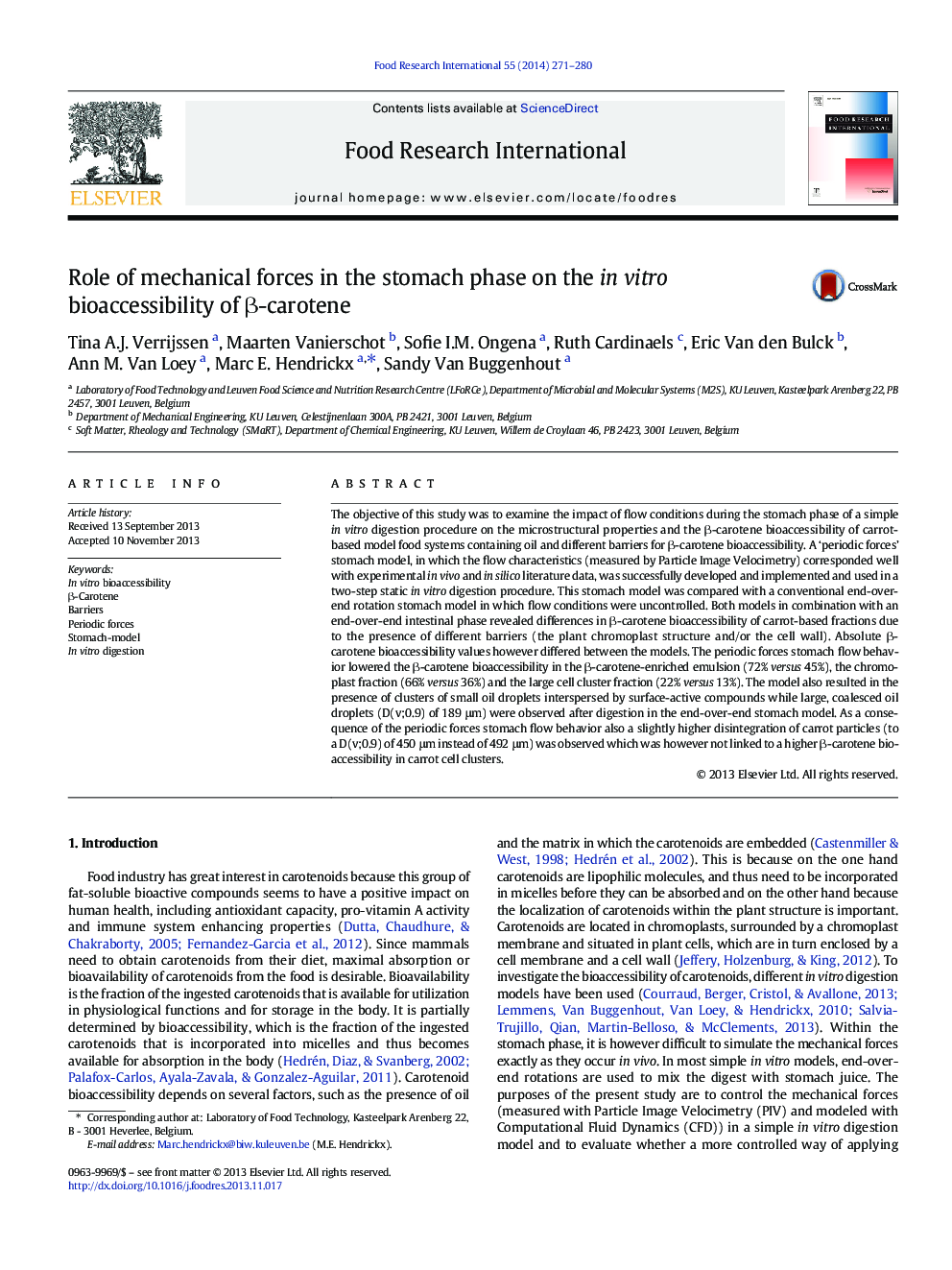| کد مقاله | کد نشریه | سال انتشار | مقاله انگلیسی | نسخه تمام متن |
|---|---|---|---|---|
| 6397905 | 1628489 | 2014 | 10 صفحه PDF | دانلود رایگان |

- In vitro stomach model with periodic forces was developed.
- Velocity field in the stomach model matches well with in vivo and in silico data.
- Sample viscosity influences the stomach flow behavior.
- The stomach model was used in a two-step static in vitro digestion procedure.
- Flow behavior influences particle size distribution and β-carotene bioaccessibility.
The objective of this study was to examine the impact of flow conditions during the stomach phase of a simple in vitro digestion procedure on the microstructural properties and the β-carotene bioaccessibility of carrot-based model food systems containing oil and different barriers for β-carotene bioaccessibility. A 'periodic forces' stomach model, in which the flow characteristics (measured by Particle Image Velocimetry) corresponded well with experimental in vivo and in silico literature data, was successfully developed and implemented and used in a two-step static in vitro digestion procedure. This stomach model was compared with a conventional end-over-end rotation stomach model in which flow conditions were uncontrolled. Both models in combination with an end-over-end intestinal phase revealed differences in β-carotene bioaccessibility of carrot-based fractions due to the presence of different barriers (the plant chromoplast structure and/or the cell wall). Absolute β-carotene bioaccessibility values however differed between the models. The periodic forces stomach flow behavior lowered the β-carotene bioaccessibility in the β-carotene-enriched emulsion (72% versus 45%), the chromoplast fraction (66% versus 36%) and the large cell cluster fraction (22% versus 13%). The model also resulted in the presence of clusters of small oil droplets interspersed by surface-active compounds while large, coalesced oil droplets (D(v;0.9) of 189 μm) were observed after digestion in the end-over-end stomach model. As a consequence of the periodic forces stomach flow behavior also a slightly higher disintegration of carrot particles (to a D(v;0.9) of 450 μm instead of 492 μm) was observed which was however not linked to a higher β-carotene bioaccessibility in carrot cell clusters.
Journal: Food Research International - Volume 55, January 2014, Pages 271-280